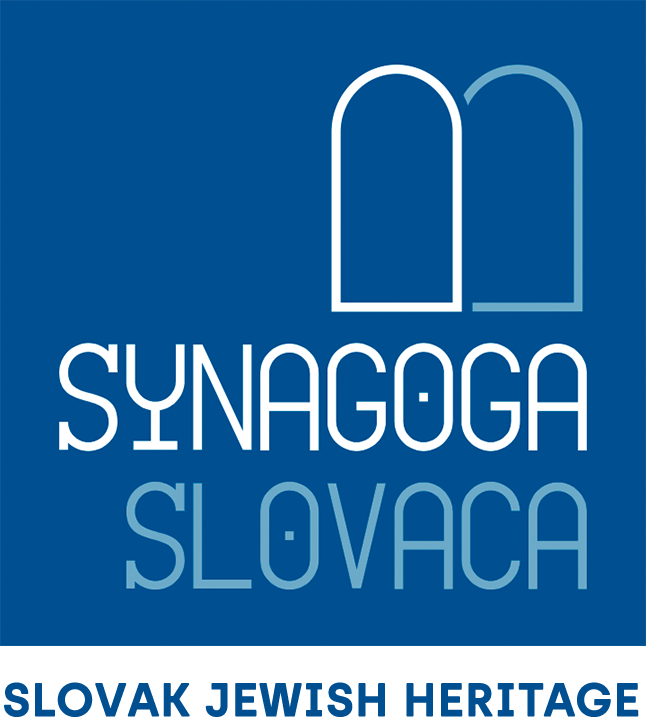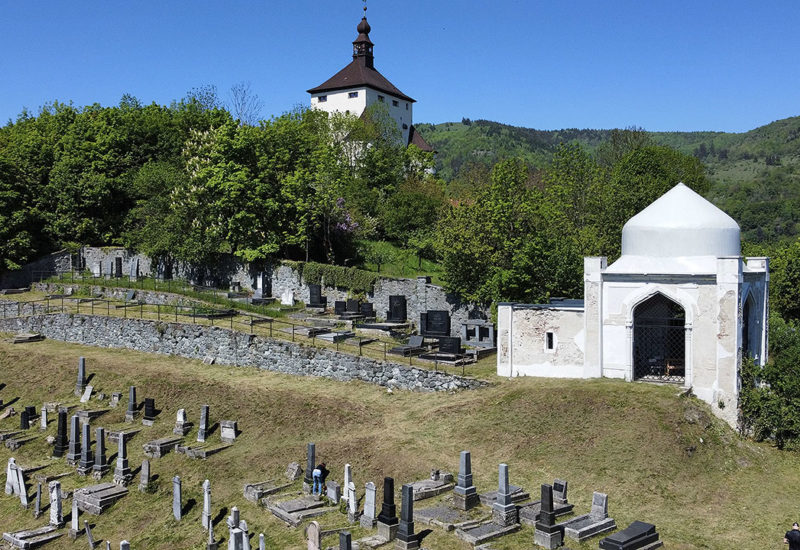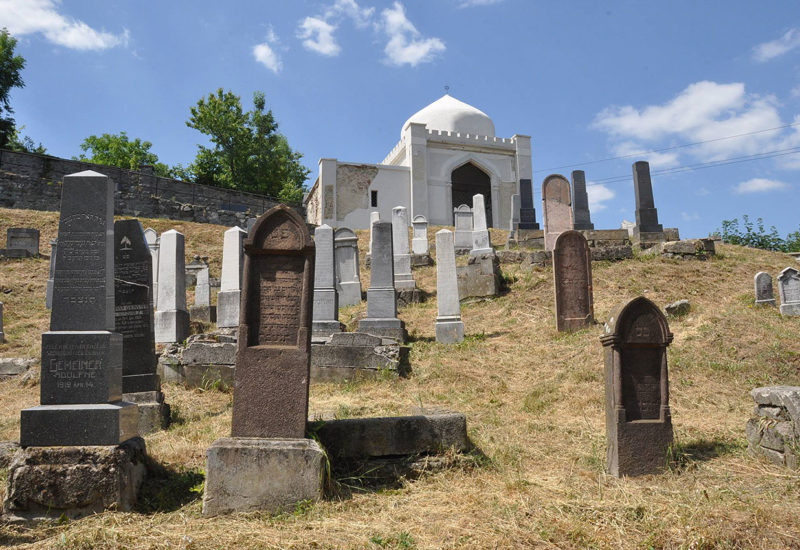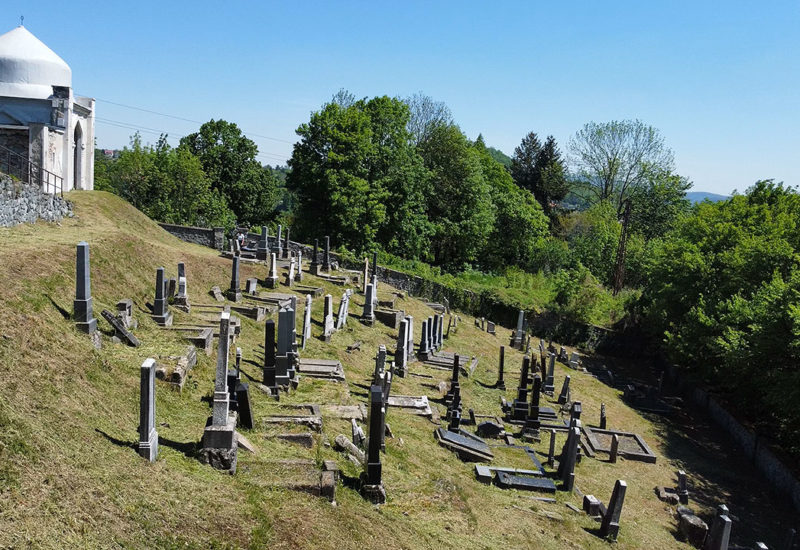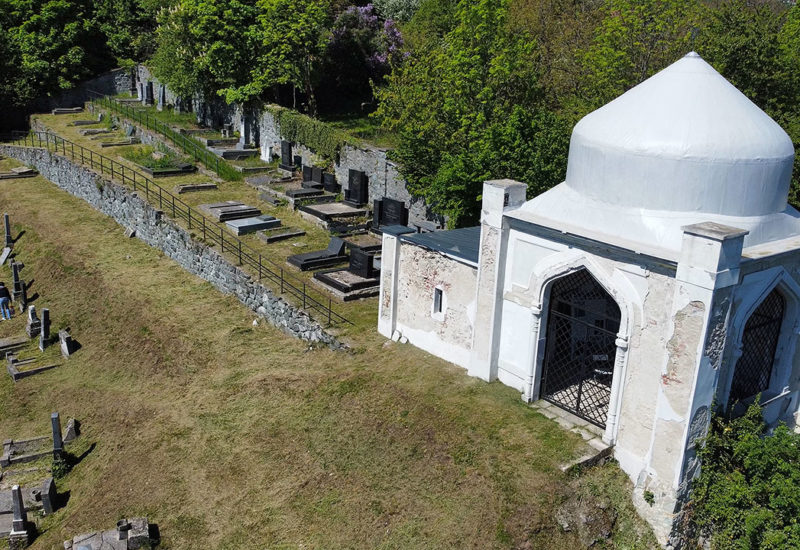Banská Štiavnica, Cemetery
The Jewish cemetery, owned by the municipality, has undergone restoration, thanks to a civic initiative led by a local activist, Dr. Beata Nemcová. The cemetery occupies a beautiful location on a hillside above town, spread out over a descending, partially terraced slope. The tombstones are simple, reflecting the urban taste of the nineteenth and early twentieth centuries. The epitaphs are mostly written in German and Hebrew, but Hungarian and Slovak inscriptions can also be found. The cemetery chapel still stands, and its elaborate, Moorish-style dome is a local landmark. The rectangular building originally served as both the entrance to the cemetery and the ceremonial hall for funerals. Long neglected and in danger of collapse, it is currently undergoing full restoration. The cemetery is an integral part of a UNESCO World Heritage site.
Banská Štiavnica was an important silver mining town, and Jews were barred from living here until the ban on Jewish residence in mining towns was lifted in 1859. An organized Jewish community was established in the late 1870s and joined the Neolog movement. The Jews of Banská Štiavnica were prosperous business people and managed to integrate well into the town’s German-speaking middle-class society. The Jewish school was established in 1887, and an elegant synagogue was built in 1893. During the interwar period the Jewish community came under the rabbinate of Banská Bystrica, and later that of Zvolen. Before the Holocaust, the Jewish population of Banská Štiavnica numbered more than 400 people; today only one Jew lives here. The former synagogue on Novozámocká Street has been restored as a brewery and is not accessible to the public.
Address
Novozámocká Street
Banská Štiavnica
Coordinates
48°27’21.1″N
18°53’40.5″E
